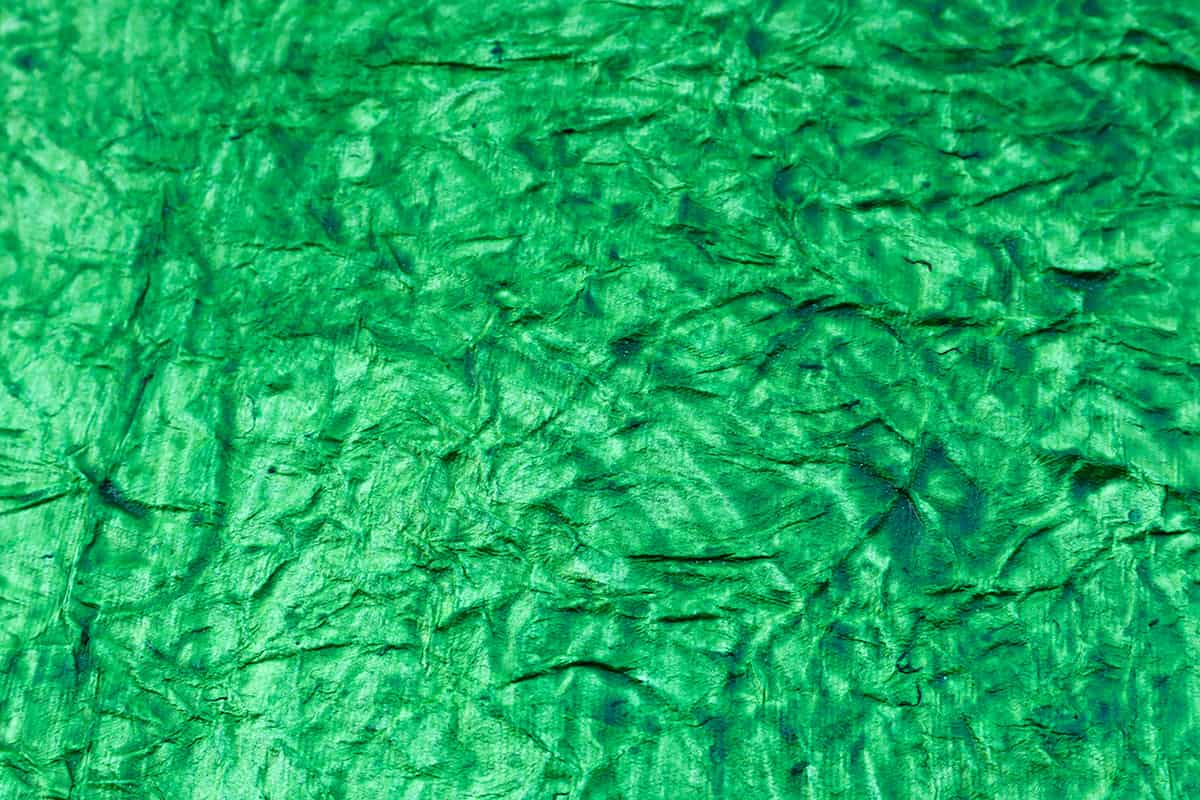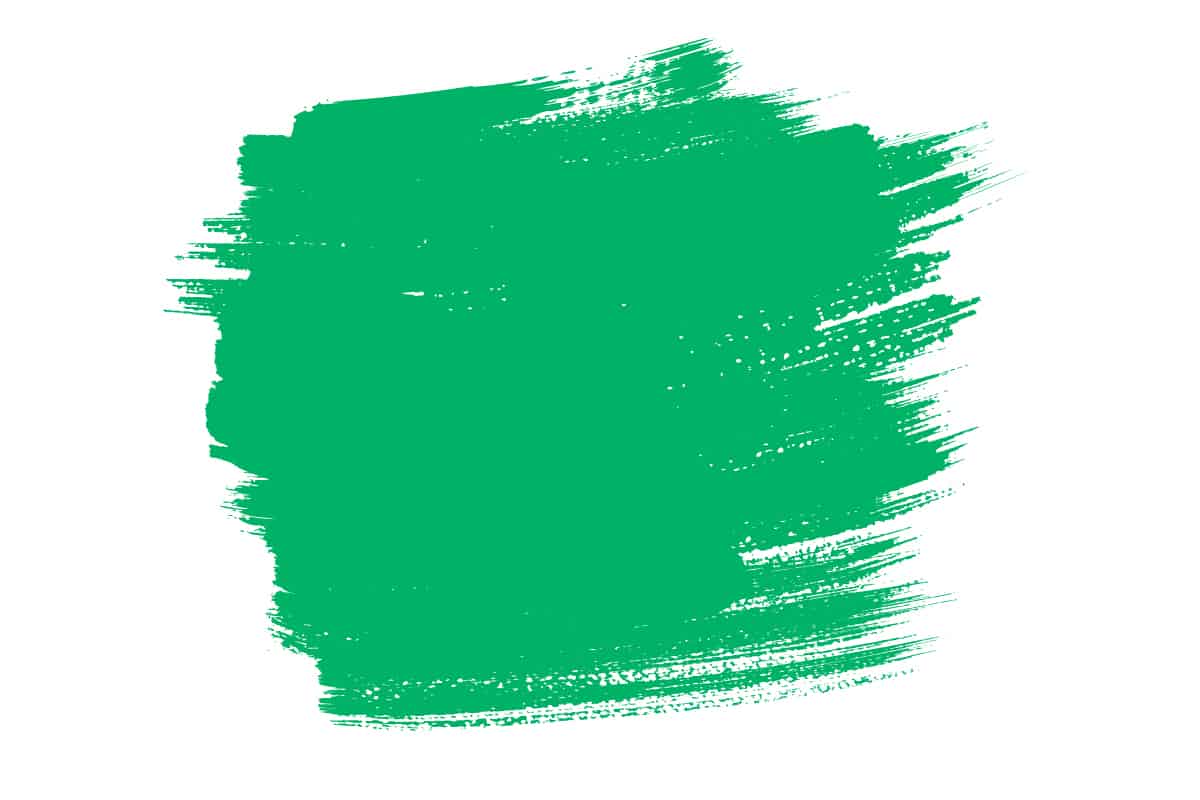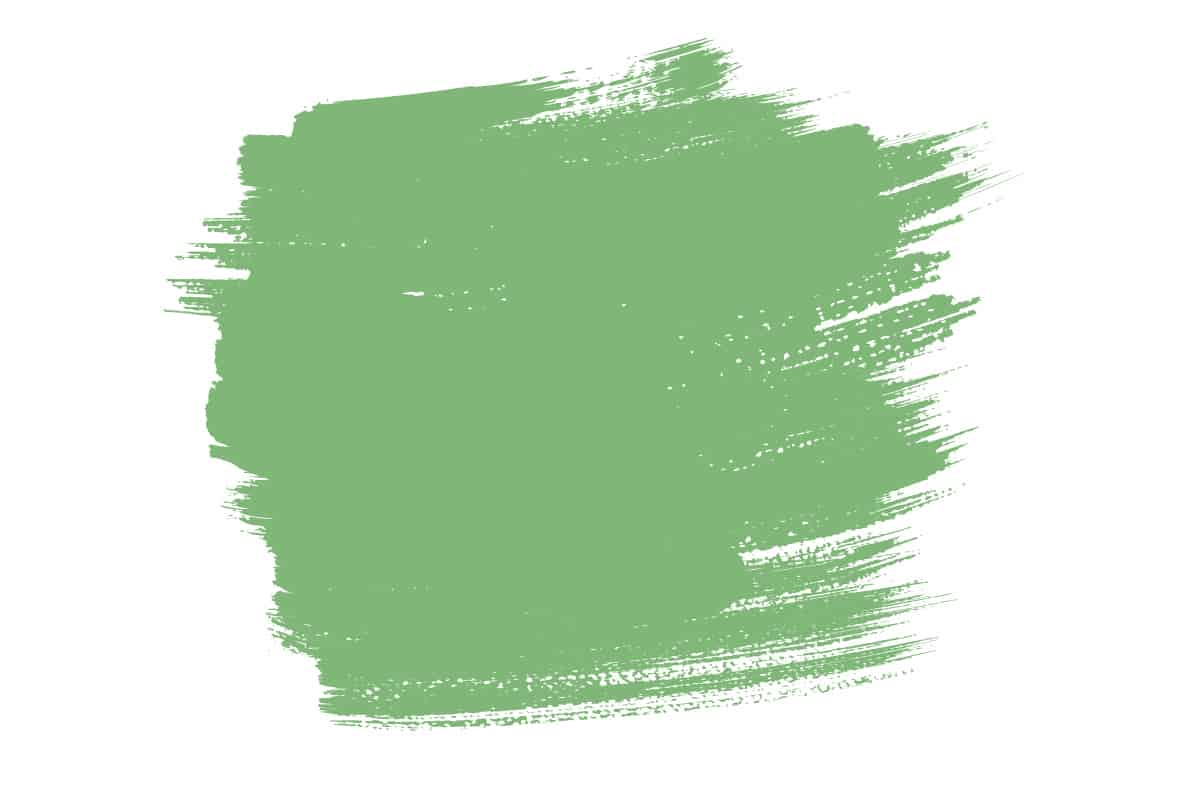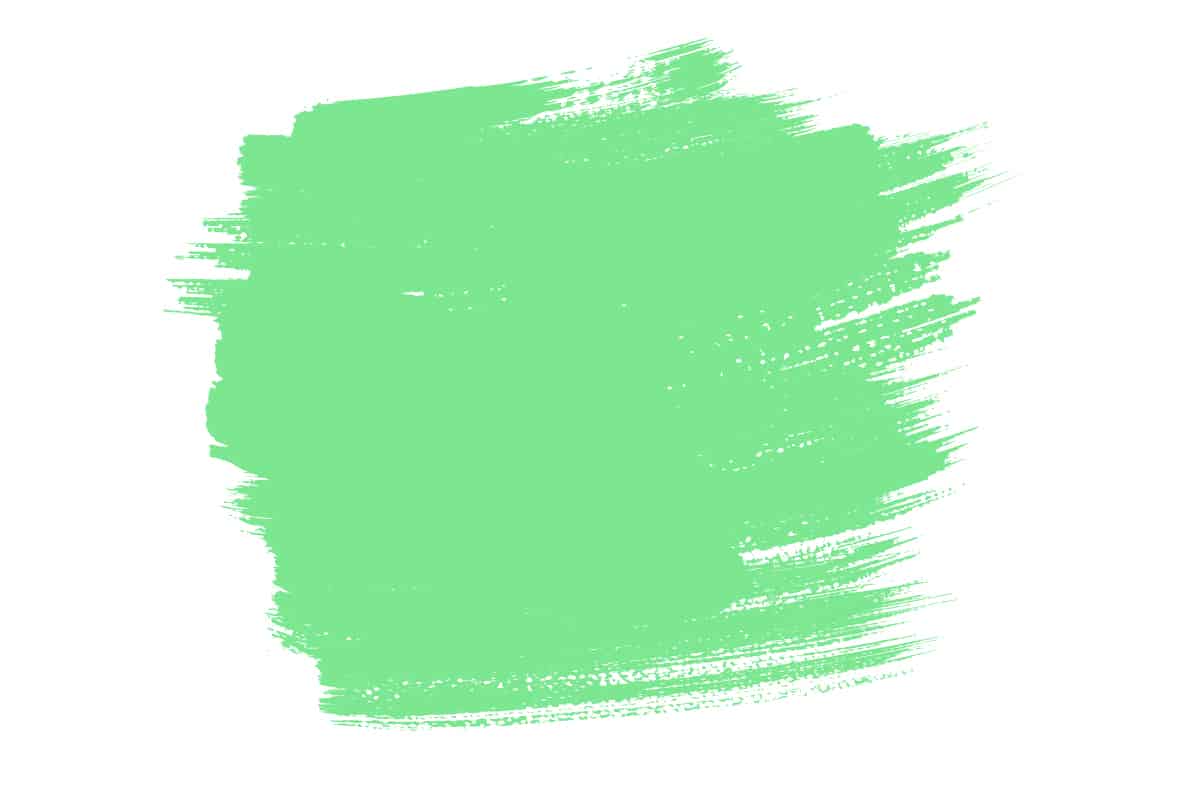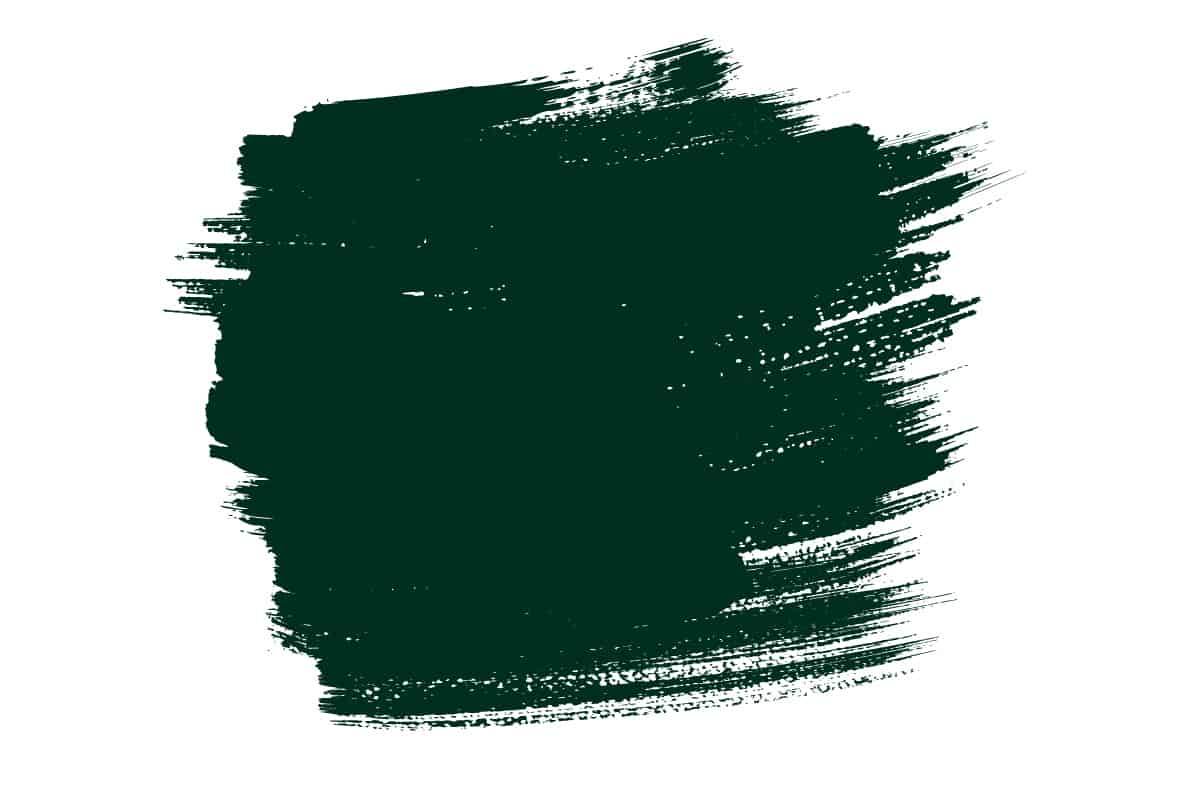Green is a secondary color, which means it can be made by mixing two primary colors together.
The colors you will need to make green are blue and yellow, but the type of blue and yellow you use are going to dictate the type of green you end up with. Here we investigate how to make a range of different types of green.
If you’ve ever experimented by mixing paint colors together to see what new colors you can make, you’ll know that the slightest adjustment in the colors you choose can make a huge difference to the color you create. If you’re trying to make a specific shade of green, you’ll need to gain an understanding of color temperature and how this plays a vital role in color mixing.
How to Make Green
Most of us learned at an early age that mixing blue and yellow together will result in green, but creating a particular type of green is much more complicated than throwing any shade of blue and yellow together.
For a true, mid-range green, you’ll want to mix primary blue and primary yellow together. For other shades of green, focusing on the temperature of the colors is important.
Creating Cool Greens
Blue is a cool color, and yellow is a warm color; however, when it comes to selecting the type of blue and yellow you want to make a cool green, you need to think of color temperatures comparatively rather than absolute. This means instead of thinking yellow is purely a warm color, you need to explore the range of warmth.
Some shades of yellow will be warmer than others, while some will be less warm. For the sake of mixing colors together to make a cool green, it’s useful to think of the least warm yellows as cool yellows. Although technically they are still warm, they are cool compared with the warmest shades of yellow.
For example, yellow colors that are closer to orange on the color wheel are the warmest. This includes ochre, amber, and honey. Lemon and pineapple are shades of yellow that are comparatively cooler than the warmest shades of yellow, so for the purpose of this exercise, they are cool yellows, despite still being warm overall.
To create a cool shade of green, you will need to identify a cool yellow and mix that with a cool blue. For example, combine lemon yellow with cobalt blue to achieve a cool green such as lime green or pear green.
Choosing a cool blue is much like choosing a cool yellow. Although all blues are technically cool, you’ll want to find a shade of blue that is cooler than other shades of blue. This will help to ensure that your resulting green is cool.
Creating Warm Greens
If you want to create a warm green, there are two ways to do this. Firstly, mix a warm blue with a warm yellow, and the resulting shade of green will lean towards the warmer side of the green spectrum. If you don’t have a warm yellow and warm blue to start with, you can use a third color to make your green warmer.
For a warm green color, first use your blue and yellow shades to make green, then add a small amount of orange or red. This will add warm tones to the green, making it lean more toward an olive or khaki shade. Just be careful not to add too much orange or red, because this will result in a brown color instead of green.
Always add very small proportions and then mix to see the resulting color before you add more paint. It’s always easier to add more paint to deepen the color than it is to go back a step to regain the color you had before.
Creating Light Greens
If you want to make any color lighter then the advice is usually to simply add white. However, if you add white to green you won’t just make it lighter; you will also mute the color. If this is what you’re aiming to do, then adding white will work great. However, if you want to create a lighter shade of more vibrant green, then you’ll need to use a different tactic.
To do this, first, create your green paint using blue and yellow, and then add more yellow to lighten the shade further while maintaining vibrancy. This will need to be a paler version of yellow, and avoid yellows that are too warm as this could result in a brownish-shade of green. A light lemon yellow would work well.
Alternatively, you can lighten a green color by mixing it with cream, as cream is effectively a very pale shade of yellow, which can also be categorized as a warm white or a yellow-tinged white. Adding cream to green will lighten it and mute it somewhat, though it will be less muted than if you were to use white as your lightener.
Creating Dark Greens
To make any color darker you can add a tiny drop of black. To create dark green, adding a very small amount of black will work, but it will also make it quite murky. If you want a rich and deep shade of green, such as emerald green, then adding a little purple can work well.
Be sure to use a purple that is on the cooler side of the spectrum, such as violet. Work in a few drops of violet to your green, a little at a time. This will darken the green but maintain richness and depth, which you wouldn’t achieve by adding black.
Making Green Without Yellow
Blue and yellow are the two colors most commonly used to make green, but they aren’t the only colors that will result in this color. If you don’t have any yellow paint, then you can substitute it with orange. Mixing orange and blue will give you a very warm shade of green, such as olive.
Use a slightly higher proportion of blue than orange, otherwise, you could end up with a color that is more similar to brown than green.
Like with any colors you mix, the shade of orange you use is going to dictate the resulting color. For a vibrant green, opt for a cooler orange that is nearer to yellow on the color wheel than it is to red. To help balance out the warmth when you are mixing blue and orange together, be sure to use a very cool shade of blue.
Can You Make Green Without Blue?
Using blue and yellow together is the easiest, and usually best way to make any type of green. However, if you need green paint but you don’t have any blue, you can substitute other colors in its place.
Mixing yellow and cool gray will give you a murky shade of green similar to swamp green. You can also mix yellow with brown to get a muddy green color. Again, using a cool shade of yellow is going to help to ensure your resulting color is more green than brown. If you combine a warm yellow with brown then the color you create will be closer to tan than green.
